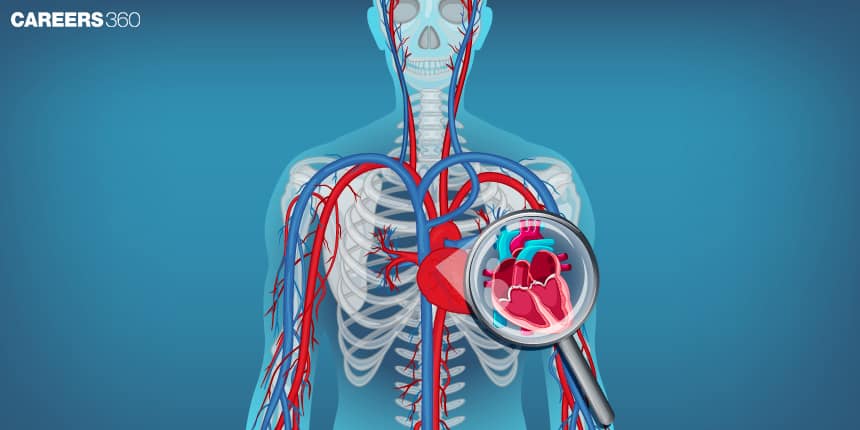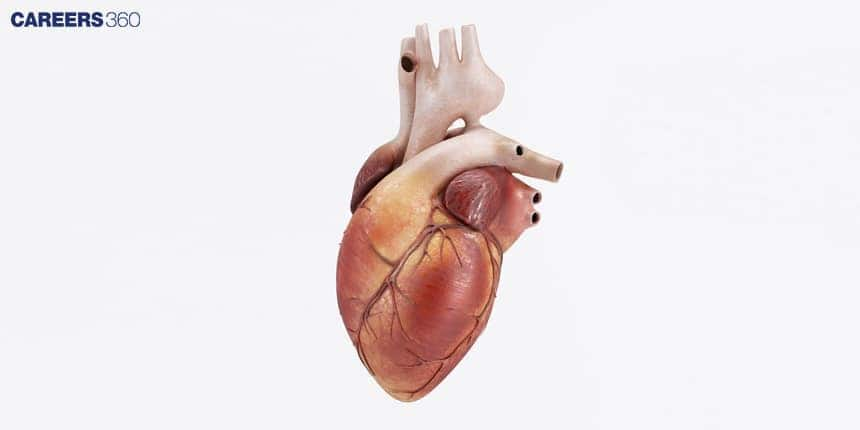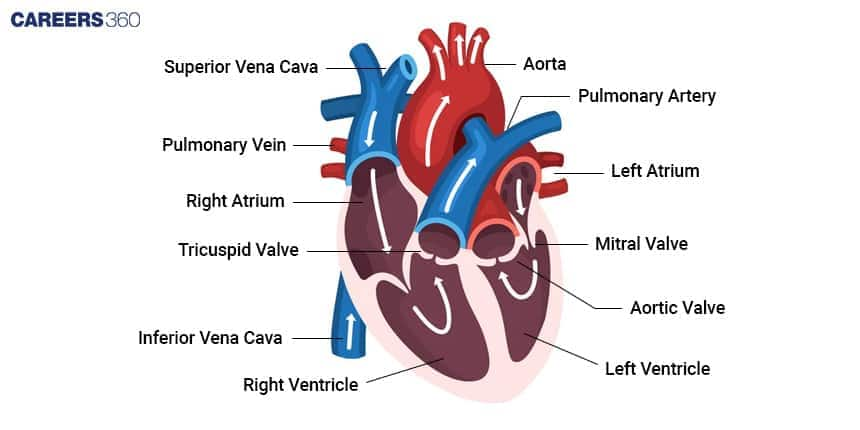Heart Pump Of The Circulatory System
The human heart is a vital muscular organ that functions as a central component of the system. It is placed in the thoracic cavity and maintains continuous blood flow by pumping from one end of the vessel to the other, from where oxygen and nutrients enter tissues and carbon dioxide, among other wastes, get removed. The heart is divided into four chambers: two atria, and two ventricles with valves between them to ensure only one-way blood flow. A rhythmic contraction of its walls is regulated by a cardiac conduction system such that it can maintain a steady heartbeat at rest and during work. This is an important topic from the Body Fluids and Circulation chapter of biology.
- Definition of Human Heart
- Electrical Conduction System of the Heart
- Heartbeat Regulation
- Blood Vessels and Circulation
- Recommended video on the Functioning of the Human Heart

Definition of Human Heart
The human heart is an organ beyond compare, serving as the central pump for the circulatory system. This heartbeat, beating over 30 million times in a year, supplies the tissues and organs of the human body with blood, oxygen, and nutrients.
Also Read
Basic Anatomy of the Human Heart

The heart is a two-sided, four-chambered muscular pump positioned in the thoracic cavity, flanked by the lungs. Enclosed is a two-layered covering called the pericardium. The four chambers of the heart, from superior to inferior, include the right and left atria and the right and left ventricles.
The chambers are separated by walls of muscle. The two upper chambers are called the atria, or atrium singular, and have thin walls and small, protruding appendages called auricles. The interatrial septum isolates the right atrium from the left atrium.
Pathway of Blood Circulation

Blood is pumped in a circulatory pathway. Blood that is deoxygenated from the body enters the right atrium via the superior and inferior vena cava. Blood then moves to the right ventricle, which is further pumped to the lungs to be oxygenated through the pulmonary arteries.
The oxygenated blood returns to the left atrium through the pulmonary veins and then moves on to the left ventricle. The left ventricle then pumps this oxygenated blood throughout the body via the aorta. With this circulation, the blood effectively transports enough oxygen and nutrients to all body tissues while, at the same time, removing carbon dioxide and wastes.
The Cardiac Cycle
The cardiac cycle essentially comprises alternating two main phases: diastole and systole. Diastole is the period when the heart chambers are relaxed and are filling with blood. On the other hand, systole is the period when heart muscles contract and force the blood out of the heart chambers.
However, the moment the contraction is over, blood begins to flow into the heart chambers and the cycle continues. The graphs of pressure changes in the heart over the duration during which the cardiac cycle occurs depict these phases and how they coordinate themselves.
Heart valves and their Function
Heart valves are structures, which facilitate the flow of blood in one direction. When placed between the atrium and the ventricle, the tricuspid valve avoids the regurgitation into the right atrium. The mitral valve performs the same function when placed between the left atrium and the ventricle.
The right and left atria are prevented from backflow when the closing of the aortic and pulmonary valves is done during the phase of diastole. The opening and closing of the valves are maintained by the changes in pressure developed in the chambers of the heart.
Electrical Conduction System of the Heart
The precociously developed electrical conduction system of the heart paces the beat of the heart. The sinoatrial (SA) node, located in the right atrium, is the source of the heart's normal action impulses.
The action potential is transmitted first to the atrioventricular (AV) node, then the bundle of His, and then out to the Purkinje fibres, enabling the spread of the impulse to the muscles in the heart to cause them to contract. The spread of impulses through the heart can be observed on an electrocardiogram (ECG), which is essentially the recording of the spread of electrical activity in the heart.
Heartbeat Regulation
The autonomic nervous system and hormones that regulate the heartbeats. At any prospect of stress to the body, or either during any physical activity, the system of the sympathetic nerves can speed up the rate of the heartbeat, while the parasympathetic system can slow the rate down during relaxation. The presence of other hormones in the body, like adrenaline, majorly plays a role in regulating the heart rate.
Blood Vessels and Circulation
The circulatory system consists of arteries, veins, and capillaries. Arteries carry oxygenated blood away from the heart, veins transport deoxygenated blood back to the heart, and capillaries enable the exchange of gases, nutrients, and wastes at the tissue level.
Maintaining Heart Health
A healthy lifestyle is one of the most important ways to maintain a healthy heart. Regular exercise, a balanced diet, avoidance of cigarettes, and stress control are the norms. Among the most common heart diseases are coronary artery disease, heart failure, and arrhythmias. Protection and timely treatment are essential for maintaining heart health.
Also Read
Recommended video on the Functioning of the Human Heart
Frequently Asked Questions (FAQs)
The major function of the human heart is the pumping of blood through the body, thereby providing tissues with oxygen and nutrients and carrying away carbon dioxide and other wastes.
The unidirectional flow of the blood is performed by the heart with the help of the action of its four valves: tricuspid, pulmonary, mitral and last but not least, the aortic valves open and then close with the change in excepted pressure.
The SA node, also called the sinoatrial node, is the heart's natural pacemaker. This node is responsible for generating electrical impulses that establish a regular rhythm for heartbeats.
Lifestyle behaviours leading to a healthier heart include proper diet, good exercise, cessation of smoking, controlled stress, and appropriate weight maintenance.
An electrocardiogram monitors the electrical activity of the heart. It is used in the diagnosis of various heart conditions that detect irregularities in heart rhythm.
Also Read
29 Nov'24 01:19 PM
27 Nov'24 07:39 PM
27 Nov'24 07:15 PM
27 Nov'24 05:11 PM
26 Nov'24 08:14 PM
26 Nov'24 06:50 PM
26 Nov'24 05:51 PM
26 Nov'24 04:44 PM
26 Nov'24 03:52 PM
26 Nov'24 02:55 PM

